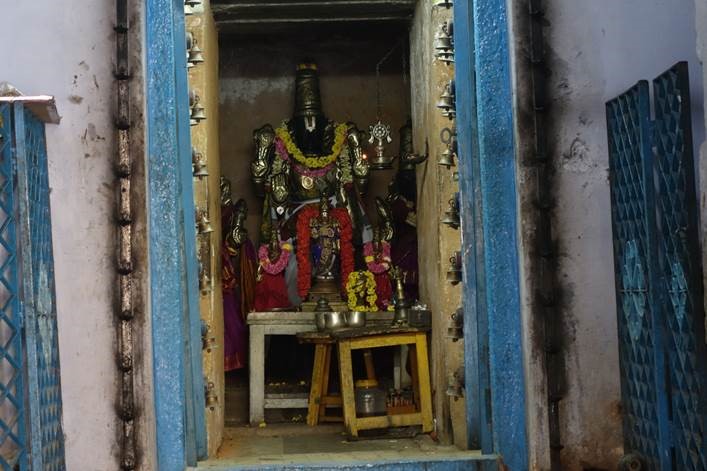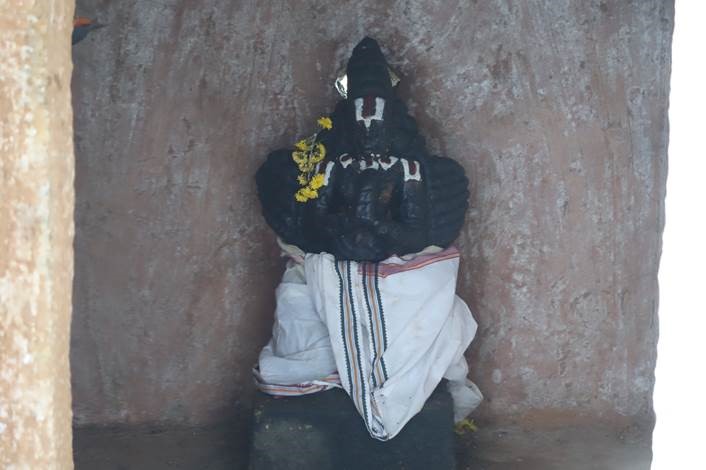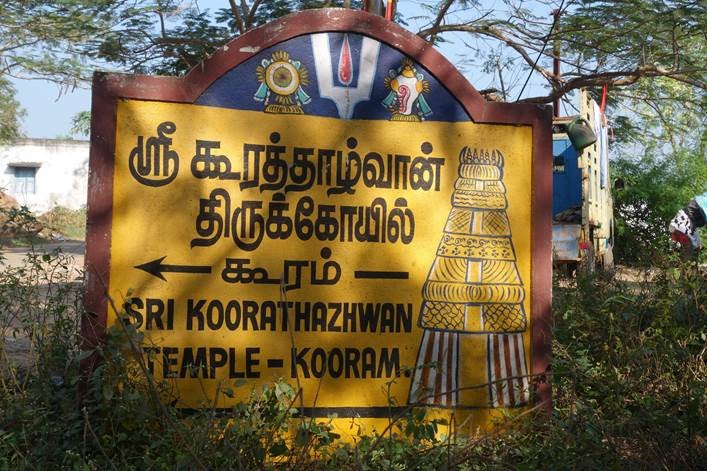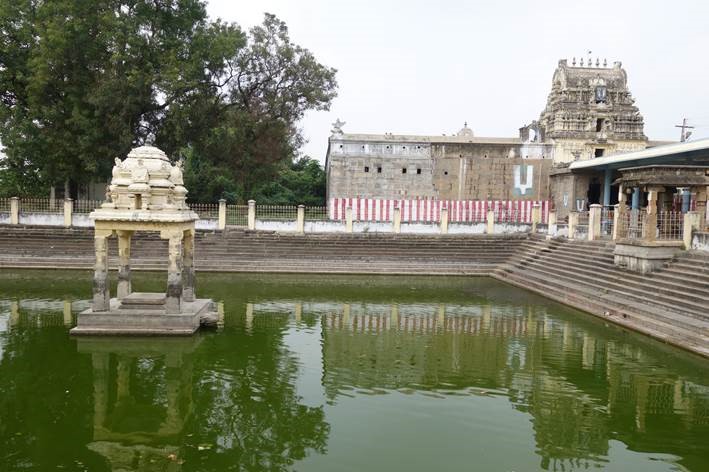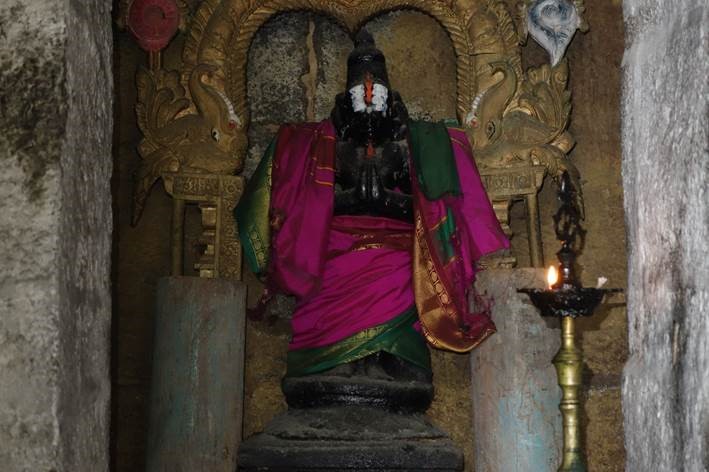Srinivasa Perumal Temple is dedicated to Lord Vishnu located at Elanagar village in Uthiramerur Taluk of Kanchipuram district. It is situated approximately 25kms from Kanchipuram on the road leading to Vandavasi.
It was also home to several eminent Sri Vaishnava families who rendered services to the cause of Sri Vaishnavism. Gaddam Tatha Desikan, one of the spiritual leaders in Sri Vaishnavism, had done tirtha kainkaryam for Sri Srinivasa Perumal of Tirumala, bringing water every day from Akasa Ganga (a sacred waterfall in Tirumala) and performing Thirumanjanam and other rituals for this deity. One day, a thirsty man asked him for water, and having given it to him, Gaddam Tatha Desikan went back to Akasa Ganga to bring more water for the temple. However, the thirsty man appeared again and again and on repeatedly bringing water, Sri Desikan became tired and fainted. That man then revealed himself to be the deity enshrined in the Tirumala temple and blessed him. He ordered Tatha Desikan to construct five temples for himself with Sri Devi and Bhu Devi in the villages of Paiyoor, Elanagar, Karumbur, Natteri and Vilankuppam. On the orders of Srinivasa Perumal, Gaddam Tatha Desikan constructed this Srinivasa Perumal temple in 1212 A.D. in Elanagar.
Elanagar was the original home of many Azhagiyasingars belonging to one family of the famous Sri Ahobila Mutt. The Ahobila Mutt was founded in 1398 A.D. by Sri Adivan Satakopa Yatindra Mahadesikan. According to traditional accounts, Srivan Satakopa Parankusa Yatindra Mahadesikan was the 10th Jiyar of the Ahobila Mutt and was from the Elanagar Chakravarthi family. He learned many sastras from the 9th Jiyar Srivan Satakopa Narayana Yatindra Mahadesikan. He established the agraharam named Gada Dharapuram near Kumbakonam. The members of the Elanagar family later migrated to Gadadharapuram and hence are known as the Elanagar-Gadadharapuram family.
The Srinivasa Perumal temple in Elanagar is a very small shrine. The entrance to the temple, as well as the main deity, faces east. In the main sanctum sanctorum, Srinivasa Perumal is seen standing holding the Sankha and Chakra in his upper hands, with his lower right hand in varada hasta (boon giving pose) and lower left hand as though placed on top of his mace with Sri Devi and Bhu Devi on either side. The processional images of this temple are similar to the main one. The other Utsava – Vigrahas worshipped in this shrine are Navaneetha Krishna and Chakrathaazhwar (Sri Sudarsana).
A unique festival is celebrated in the month of Vaikasi. Fifteen Utsava-murtis of Vishnu with Garuda from fifteen Vishnu temples in the Kanchipuram-Vandavasi route go to River Cheyyar near Cheyyar town. There, each is placed in a separate mandapa where Thirumanjanam and decoration are performed for them. Later, they return to their respective temples. The fifteen deities who are worshipped during this unique festival are Pesumperumal from Koozhamandal, Varadaraja Perumal from Perunagar, Srinivasa Perumal from Manampati, Lakshmi Narayana Perumal from Tandarai, Pundarikaksh Perumal from Visur, Vaikuntha Srinivasa Perumal from Elanirkunram, Kalyana Venkatesa Perumal from Sethupattu, Kaliya Perumal from Athi, Venkatesa Perumal from Pendai, Venugopalan from Ukkal, Srinivasa Perumal from Elanagar, Srinivasa Perumal from Teturai, Venkatesa Perumal from Mahajanampakkam, Lakshmi Narayana Perumal from Nedungal and Lakshmi Narayana Perumal from Vellamalai.
For a long time, the Srinivasa Perumal temple in Elanagar had been in a very dilapidated condition. Due to the efforts taken by the members of the Sri Elanagar, Sri Srinivasa Perumal Kainkarya Trust, this shrine has been renovated in year 2005.
How it reach Elanagar for a long time:
Elanagar can be reached by going down the road from Kanchipuram to Vandavasi, passing through the villages of Mamandur, Doosi, Ukkal and Koozhamandal and reaching the village of Perunagar. Opposite to the police station in Perunagar is a lane leading to Elanagar. This temple is tucked away in the interior of Elanagar village. Elanagar village is about 10 km from Uthiramerur. Elanagar is in Uthiramerur Taluk in Kanchipuram district. It is located 24 km towards south from district headquarters, Kanchipuram and 9 km from Uthiramerur.
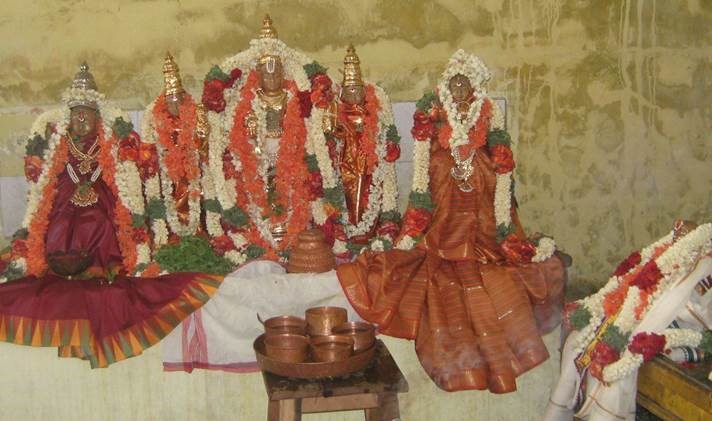
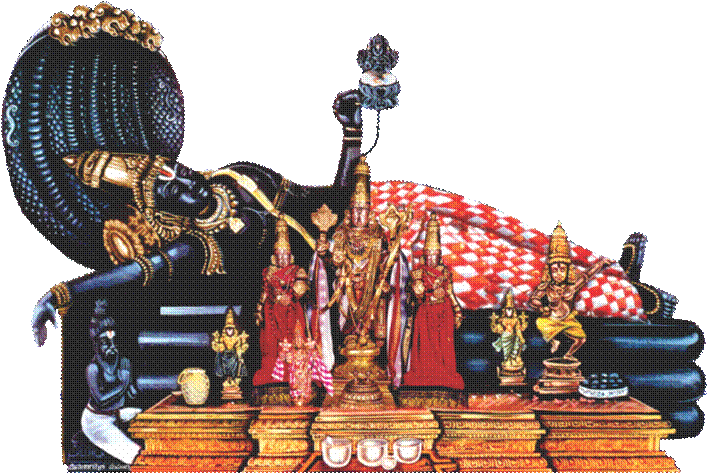 Lord Sri Veeraraghava Perumal
Lord Sri Veeraraghava Perumal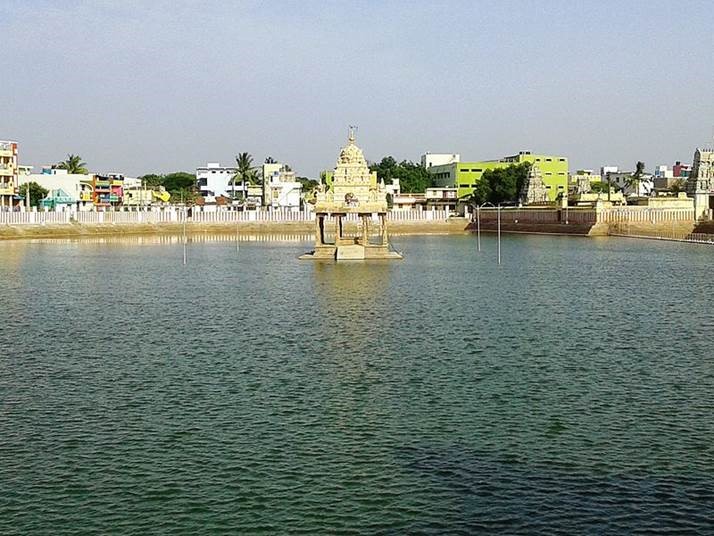 Hrittapanasini – sacred tank
Hrittapanasini – sacred tank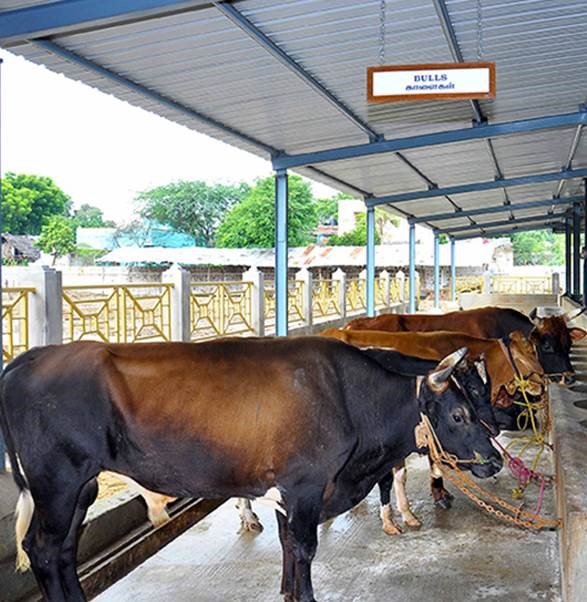 Goshala at Sri Veeraraghava Perumal Temple
Goshala at Sri Veeraraghava Perumal Temple